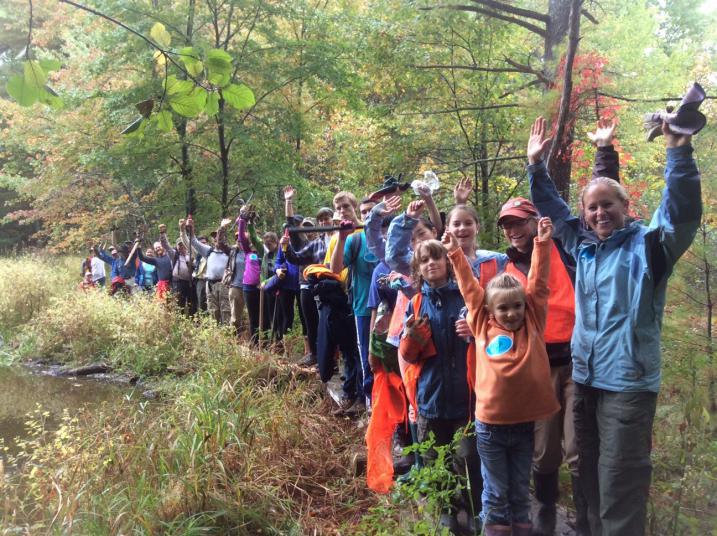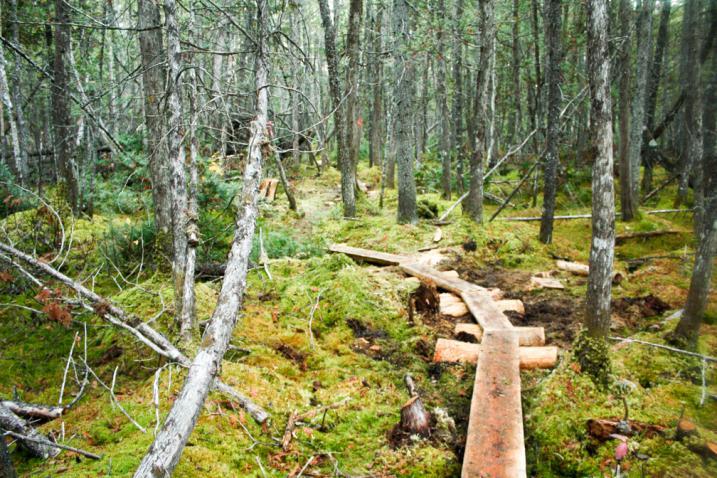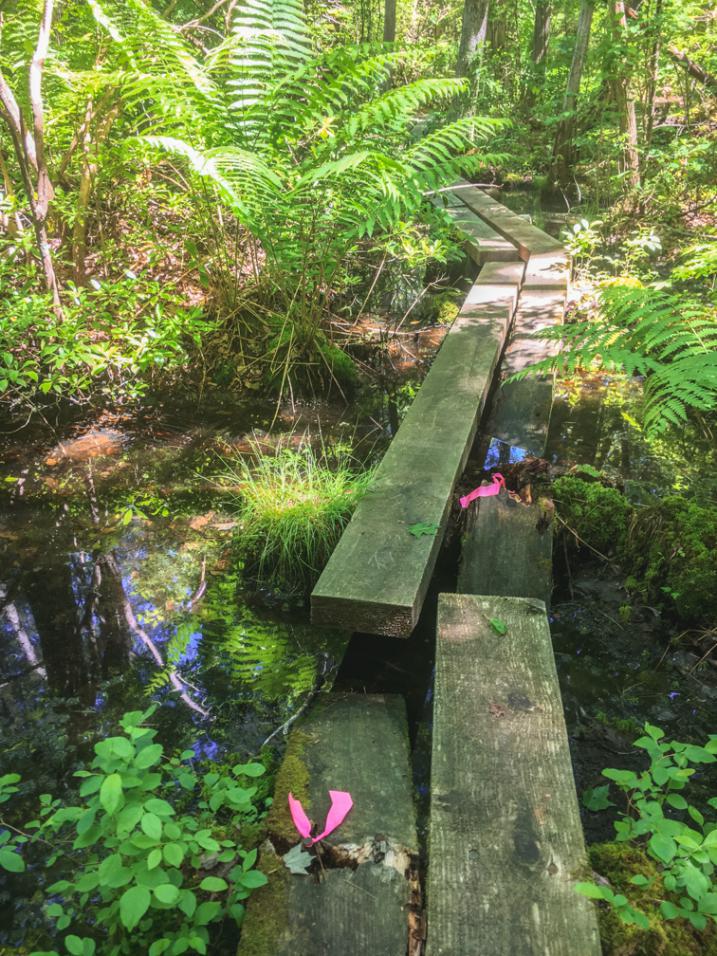Stewardship Tip: The Biology of Bog Bridges

Any hiker who has spent time in one of New England’s many conservation lands has encountered the humble bog bridge. Also known as an Alaskan boardwalk, puncheon or split log bridge, the deceptively simple structure keeps our feet dry and protects soft soils and wetlands. The bridges open up a portal into some of New England's unique wetlands and give visitors the chance to see rare plants such as predatory pitcher plants, enormous cinnamon ferns and the spectacular blooms of giant rhododendrons.
Bog bridge anatomy consists of two base logs, or sills and large boards or half logs called stringers. The stringers rest on top of the sills and are held together by spikes or long screws. Bog bridges can pass over short muddy spots or link together to extend deep into wild marshes.
Although the construction is straightforward, land managers strive to maximize the lifespan of the bog bridges on their trails. Bog bridges take a real beating between spring soaks, summer foot traffic, and winter snows. In spite of everything nature throws at them, a well-constructed set of bog bridges can last up to ten years in the wild. The longevity of a bog bridge depends on the type of wood used, the environment, and the skill of the builders. Pressure treated lumber lasts longer than natural wood, but the chemicals in pressure treated wood mean that broken stringers have to be carried away to protect sensitive marshes and woodlands. Anyone who has hauled hefty lumber several miles into the wilderness by hand can appreciate the difficulties involved!
The New Hampshire Nature Conservancy uses lumber from tree species that are naturally rot resistant, such as eastern hemlock and cedar. During construction, trail crews scrape the bark from the log sills and are careful to prevent driving the stakes too far in the wood. Bark left on logs or even the slightest indentation in the top of the board holds water and accelerates rotting.
Even when land managers take every precaution to build long-lasting bridging, it is important to replace broken and spongy bridges with new boards. Regular maintenance keeps wetland trails safe and clear for everyone to enjoy for years to come!


